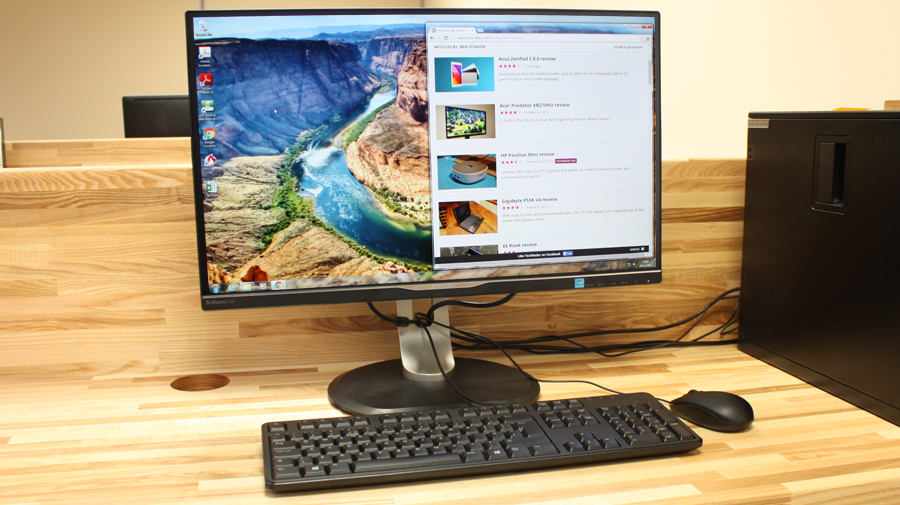Why you can trust TechRadar
Of course, while other features are appreciated the most important aspect of any monitor is the quality of the panel – in this regard the quad HD AH-IPS display doesn't disappoint.
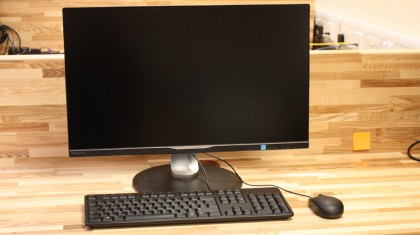
The decision to use an IPS panel from LG rather than the standard TN panels found in many other monitors means that colour on the Philips 258B6QJEB remains consistent even at wide viewing angles, while giving considerably better colour accuracy and consistent brightness.
Philips has employed special Flicker-Free technology that you won't find on cheaper LED-backlit screens, which regulates the brightness of the screen and reduces flicker which can often cause eye fatigue when using lower-quality monitors.
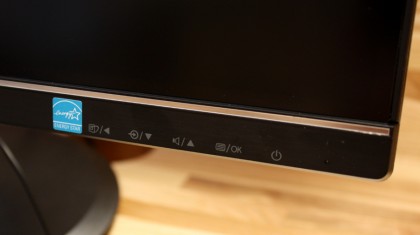
A range of SmartImage presets can be chosen, including Office, Photo, Movie, Game, Economy and user-defined settings. Philips' special technology claims that it can analyse the content displayed on-screen and optimise the display for best performance, meaning better colour saturation, sharper images and even considerable power savings when in Economy mode.
The monitor can be easily adjusted in many directions thanks to the so-called SmartErgoBase. As well as looking fairly elegant, the base allows for easy height, tilt, swivel and rotation, which means you can position the monitor exactly as you wish. There's also a cable-tidy hole that keeps clutter to a minimum – essential for a monitor such as this with so many connectivity options. Of course, if you would prefer the mount can be detached to reveal a VESA compliant set of screw holes that allows for easy mounting on a wall or desk arm.
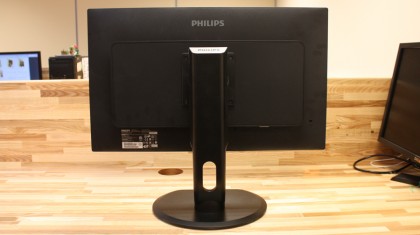
While it's unlikely that many users will rely on built-in sound, the 258B6QJEB includes a pair of 2W down-firing stereo speakers. As is to be expected from most monitor speakers, sound quality is tinny and lacking in bass. Ultimately, the integrated speakers' only real purpose is for background notification sounds or the occasional video clip. Fortunately, an audio pass-through allows users to easily connect a set of headphones or better quality stereo speakers.
Image quality
Packing a 2,560 x 1,440 pixel-resolution Quad HD panel into a relatively small screen makes for very sharp image clarity on the 258B6QJEB, though it does mean that text, fonts and icons looks a little small if you stick with Windows' standard settings.
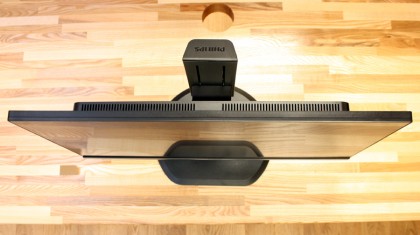
Philips claims a respectable 1,000:1 contrast ratio and 350 nits maximum brightness which all adds up to a beautiful image quality, thanks in no small part to the AH-IPS screen.
The typical response time is measured at 14ms, which is by no means the fastest around, though Philips claims a 'SmartResponse' time of up to 5ms which is definitely an improvement. Most users are unlikely to notice the input lag, though if you are after an ultrafast gaming monitor, there are alternatives that guarantee almost no lag whatsoever.
Whether watching video, gaming, photo editing or scrolling through websites, I found that the image remained clear and stable at all times thanks to the 60Hz refresh rate at full resolution. The colour reproduction is also spot on, though out of the box the brightness was a little overwhelming. After turning this down I also decided to leave SmartImage off for most of the time I had with the 258B6QJEB, and instead preferred to set up the colour settings myself.
I was particularly pleased to see adjustment options for colour temperature and Gamma alongside the standard brightness, contrast and sharpness modes. An sRGB mode is also available for very accurate colour reproduction, though this does then disable brightness and other settings. 'Pixel orbiting' is also available, which would help avoid screen burn-in if using a fairly static desktop arrangement or single application.
